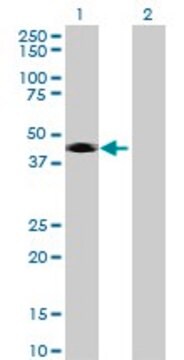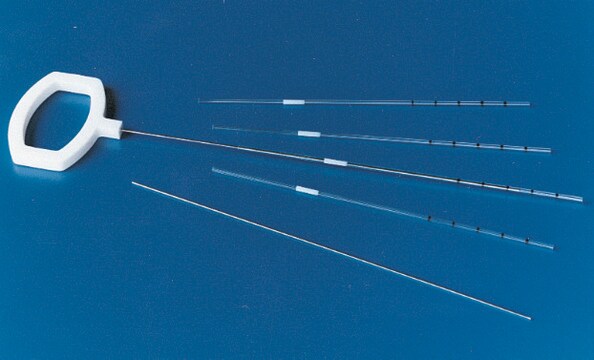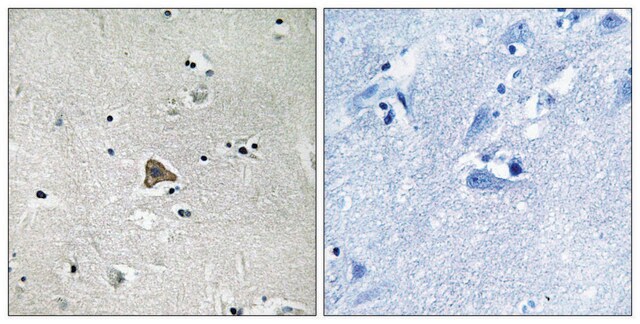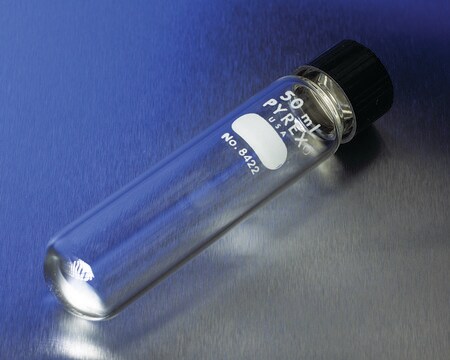추천 제품
생물학적 소스
mouse
Quality Level
결합
unconjugated
항체 형태
purified immunoglobulin
항체 생산 유형
primary antibodies
클론
120507, monoclonal
양식
lyophilized powder
종 반응성
human
기술
flow cytometry: 2.5 μg using 106 cells
immunocytochemistry: 8-25 μg/mL
immunohistochemistry: 8-25 μg/mL using fixed cells and tissue sections
western blot: 1 μg/mL
동형
IgG2b
UniProt 수납 번호
저장 온도
−20°C
타겟 번역 후 변형
unmodified
유전자 정보
human ... CD209(30835)
일반 설명
DC-SIGN is a type II protein C-type lectin that binds mannose-rich molecules such as ICAM-3 and ICAM-2 in a calcium dependent manner. DC-SIGN, a 44 kDa molecule, is identical to the HIV-1 binding protein.
특이성
Recognizes human DC-SIGN on transfected cells and on monocyte derived dentritic cells. The antibody does not react with either parental mouse cells or irrelevant transfectants, such as human DC-SIGN2.
면역원
purified from NIH/3T3 cells transfected with recombinant human DC-SIGN.
애플리케이션
Monoclonal Anti-DC-SIGN1 antibody produced in mouse is suitable for flow cytometry, immunocytochemistry at a working concentration of 8-25 μg/mL, immunohistochemistry at 8-25 μg/mL using fixed cells and tissue sections and western blotting at 1 μg/mL.
생화학적/생리학적 작용
DC-SIGN1 is involved in molecular interactions between dendritic cells and resting T-cells. DC-SIGN interacts with viruses such as X4, R5, X4R5 HIV-1 strains, HIV-2, and SIV. It captures HIV-1 through its interaction with the gp120 envelope glycoprotein and promotes efficient infection of CD4+ T cells that co-express chemokine receptors.
물리적 형태
Lyophilized from a 0.2 μm filtered solution in phosphate buffered saline with 5% trehalose.
면책조항
Unless otherwise stated in our catalog or other company documentation accompanying the product(s), our products are intended for research use only and are not to be used for any other purpose, which includes but is not limited to, unauthorized commercial uses, in vitro diagnostic uses, ex vivo or in vivo therapeutic uses or any type of consumption or application to humans or animals.
적합한 제품을 찾을 수 없으신가요?
당사의 제품 선택기 도구.을(를) 시도해 보세요.
Storage Class Code
11 - Combustible Solids
WGK
WGK 1
Flash Point (°F)
Not applicable
Flash Point (°C)
Not applicable
개인 보호 장비
Eyeshields, Gloves, type N95 (US)
S Pöhlmann et al.
Journal of virology, 75(10), 4664-4672 (2001-04-20)
Dendritic cells (DCs) efficiently bind and transmit human immunodeficiency virus (HIV) to cocultured T cells and so may play an important role in HIV transmission. DC-SIGN, a novel C-type lectin that is expressed in DCs, has recently been shown to
T B Geijtenbeek et al.
Cell, 100(5), 575-585 (2000-03-18)
Contact between dendritic cells (DC) and resting T cells is essential to initiate a primary immune response. Here, we demonstrate that ICAM-3 expressed by resting T cells is important in this first contact with DC. We discovered that instead of
T B Geijtenbeek et al.
Cell, 100(5), 587-597 (2000-03-18)
Dendritic cells (DC) capture microorganisms that enter peripheral mucosal tissues and then migrate to secondary lymphoid organs, where they present these in antigenic form to resting T cells and thus initiate adaptive immune responses. Here, we describe the properties of
T B Geijtenbeek et al.
Nature immunology, 1(4), 353-357 (2001-03-23)
Dendritic cells (DCs) are recruited from blood into tissues to patrol for foreign antigens. After antigen uptake and processing, DCs migrate to the secondary lymphoid organs to initiate immune responses. We now show that DC-SIGN, a DC-specific C-type lectin, supports
B M Curtis et al.
Proceedings of the National Academy of Sciences of the United States of America, 89(17), 8356-8360 (1992-09-01)
The binding of the human immunodeficiency virus (HIV) envelope glycoprotein gp120 to the cell surface receptor CD4 has been considered a primary determinant of viral tropism. A number of cell types, however, can be infected by the virus, or bind
자사의 과학자팀은 생명 과학, 재료 과학, 화학 합성, 크로마토그래피, 분석 및 기타 많은 영역을 포함한 모든 과학 분야에 경험이 있습니다..
고객지원팀으로 연락바랍니다.

![Monoclonal Anti-DC-SIGN [8B6] antibody produced in mouse affinity purified immunoglobulin (IgG)](/deepweb/assets/sigmaaldrich/product/images/408/054/2fea9b2a-f2f3-4f45-8c12-4b9ba364f5f6/640/2fea9b2a-f2f3-4f45-8c12-4b9ba364f5f6.jpg)





